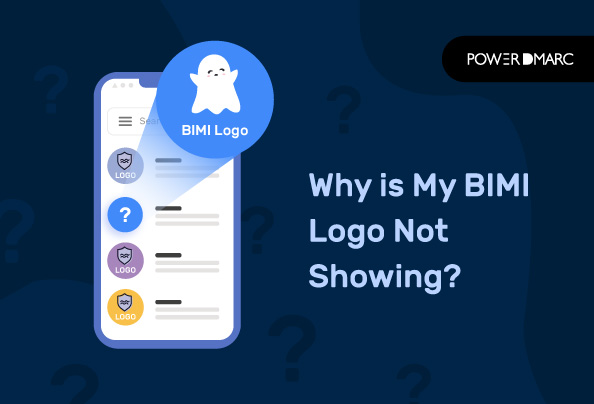Why is my BIMI logo not showing? – a question that is common among domain owners ever since the protocol has been taking the internet by storm! BIMI itself doesn’t provide any assurance that your brand logo will display as expected. This is incurred by your mailbox provider and supported email client. BIMI works by specifying certain instructions to mailbox providers to display brand logos of your choice instead of a generic one that is displayed by default.
BIMI is Required for Enhanced Brand Recall
With more and more mailbox providers embracing the protocol, BIMI can serve as an excellent marketing tool for organizations around the world. The implementation process gets simplified to a few button clicks when you avail of a hosted service, and the benefits are plenty. When you use BIMI to attach your unique brand logo to emails that your clients receive from your company, you not only leave a lasting impact but also provide them with a visual indication that you are a trusted source.
If your logo isn’t showing in your receivers’ inboxes despite having configured the protocol it might be because of either of the following scenarios:
Scenarios that can be a possible explanation for “Why is my BIMI logo not showing?”
Case 1: Your receiver’s mailbox provider doesn’t support BIMI
One of the most common reasons for your BIMI logo to not display as expected is if your receiver’s mailbox provider doesn’t support the protocol. For example, if they are using MS O365 then your BIMI logo wouldn’t display since Microsoft currently doesn’t support the display of brand logos.
If your receiver depends on Gmail, Yahoo!, AOL, or Fastmail for your email exchanges, your logo will definitely be displayed if you have configured the protocol and hosted your SVG logo properly, abiding by the BIMI logo specifications.
You can consider using our free BIMI SVG logo converter or a logo maker tool to create a BIMI-compliant logo that meets all necessary specifications, ensuring that it will display correctly.
Case 2: The sender doesn’t have a VMC
Gmail has made Verified Mark Certificates a compulsory additive for the sender while publishing their BIMI record. VMC is optional for some of the supporting mailbox providers, however, it is statutory for Gmail users, otherwise, the sender’s logo wouldn’t display.
You can buy your certificate by getting in touch with a trusted mark certification authority. Upload the certificate along with your BIMI-compliant logo to get your logo displayed in Gmail inboxes!
Case 3: You have not enforced your DMARC policy
An enforced DMARC policy of either p=reject or p=quarantine is absolutely mandatory for configuring BIMI. This is why even though BIMI isn’t directly a security protocol it is considered to be a great ally that extends support towards the enforcement and adoption of email authentication protocols like DMARC.
Sign up for a DMARC analyzer at your organization to safely shift to an enforced policy faster, without affecting your email deliverability.
Case 4: You have errors in your BIMI TXT record
Lastly, another very common reason why your logo is not showing up in your receivers’ inboxes is that there are errors in your BIMI record. These errors can range from syntax errors in your TXT record to your logo size or format not being BIMI-compliant.
It is recommended that before jumping onto publishing your record, be sure to read the BIMI logo specifications in detail to make sure you have a proper and clear understanding of the requirements. For an error-free record, you can also use a BIMI record generator tool to instantly generate your BIMI record without the fear of going wrong!
Note that whatever might be the case, ultimately the display of your brand’s logo is totally dependent on the receiver.
My Brand Logo is Displayed, What Next?
BIMI does help in providing a professional look and feel to your emails that your customers are more likely to engage with. However, a strict DMARC policy is not something to take lightly. You should enable DMARC reporting for your domains to gain clarity on delivery issues, spoofing attempts, and email performances. This will not only help improve your deliverability rates over time but also provide you with information specific to your email channels so you can monitor them better.
